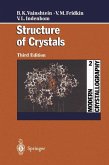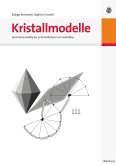To solve a crystal structure means to determine the precise spatial arrangements of all of the atoms in a chemical compound in the crystalline state. This knowledge gives a chemist access to a large range of information, including connectivity, conformation, and accurate bond lengths and angles. In addition, it implies the stoichiometry, the density, the symmetry and the three dimensional packing of the atoms in the solid. Since interatomic distances are in the region of100-300 pm or 1-3 A, 1 microscopy using visible light (wavelength Ä ca. 300-700 nm) is not applicable (Fig. l. l). In 1912, Max von Laue showed that crystals are based on a three dimensionallattice which scatters radiation with a wavelength in the vicinity of interatomic distances, i. e. X -rays with Ä = 50-300 pm. The process bywhich this radiation, without changing its wave length, is converted through interference by the lattice to a vast number of observable "reflections" with characteristic directions in space is called X-ray diffraction. The method by which the directions and the intensities of these reflections are measured, and the ordering of the atoms in the crystal deduced from them, is called X-ray struc ture analysis. The following chapter deals with the lattice properties of crystals, the starting point for the explanation of these interference phenomena. Interatomic distances Crystals . . . . . . . . . .
From the reviews: "Distinguished by its attention to the practicalities of working with real crystals...a lucid and relatively concise account of modern crystal structure solution ...valuable to anyone who has an interest in crystal structure refinement." The Geological Journal "The book provides a nice balance between describing the mathematical fundamentals and offering practical advice on how to solve a crystal structure... appropriate for an undergraduate audience (particularly in chemistry) and for graduate students or researchers who find they need a better grasp of the subject... a very helpful addition to the collection of introductory texts in X-ray crystallography. Especially for its treatment of common errors in the collection of intensity data and in the interpretation of results." Acta Crystallographica "Details at great length the inherent pitfalls and errors that one may encounter when calculating crystal structures using new software programs. The author does an excellent job of describing these errors and ways to recognize them when they appear in your calculations... Dr. Massa also lists the latest, most up-to-date crystallographic databases available on CD-ROM along with a brief description of each." Mineralium Deposita From the reviews of the second edition: "This textbook gives a concise introduction to modern crystal structure determination ... . The theoretical sections are supported by many illustrations, and lay emphasis on a good understanding ... . The most important data collection techniques ... are discussed from a practical point of view. Many tips and insights help readers to recognise and avoid possible errors and traps, and to judge the quality of results." (Chimie Nouvelle Societe Royale de Chimie, Vol. 23 (89), juin, 2005)








